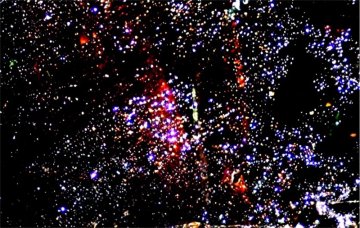 Autumn is here, and it's a wonderful time for stargazing. Find out what's up from Spaceweather PHONE.
Autumn is here, and it's a wonderful time for stargazing. Find out what's up from Spaceweather PHONE.
STEREO SUN: STEREO has left the planet! The twin spacecraft blasted off from Cape Canaveral last night on a mission to view solar explosions in startling 3D clarity. Get the full story from NASA.
COMET OUTBURST: Only a few days ago you needed a telescope to see Comet Swan. Not anymore. The comet has suddenly brightened to naked eye visibility. The cause of the outburst: Probably, a crack has opened in the comet's nucleus, exposing a fresh vein of volatile ice to vaporizing sunlight. (continued below)

Comet Swan on Oct. 25. Photo Credit: Stefan Seip.
To see the comet, go outside after sunset and look west. It is about halfway up the sky gliding through the constellation Corona Borealis: sky map. To the unaided eye it looks like a faint, fuzzy star. For full effect, look through binoculars or a small telescope. Swan's huge green atmosphere and long sinuous tail are beautiful.
Comet Swan Photo Gallery
NAME THAT CLUSTER: Can you identify this star cluster? Hint: It's very close to Earth. Scroll down for the answer.

It's a spider's web! California photographer Mila Zinkova explains: "The blue stars are dew drops hanging on the strands of a web and lit by the morning sun. The orange nebulas are autumn leaves. When I showed this underexposed picture to my husband, he said 'it looks like stars.'" Indeed it does. Compare Mila's picture to Hubble images of NGC 290 and the Quintuplet Cluster.
A slightly longer exposure reveals the strands of web and surrounding foilage: image. It really is a spider's creation--just call it "The Arachnid Cluster."
PS. Apologies for the trick question.

